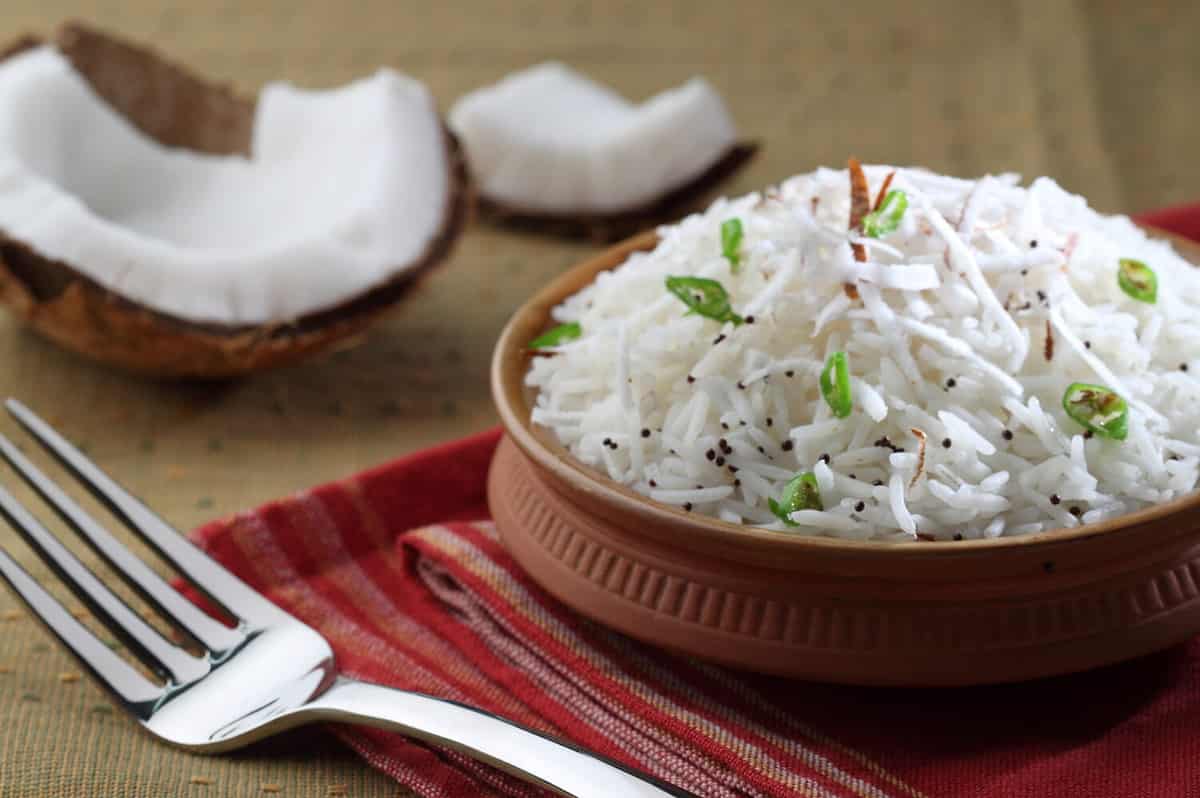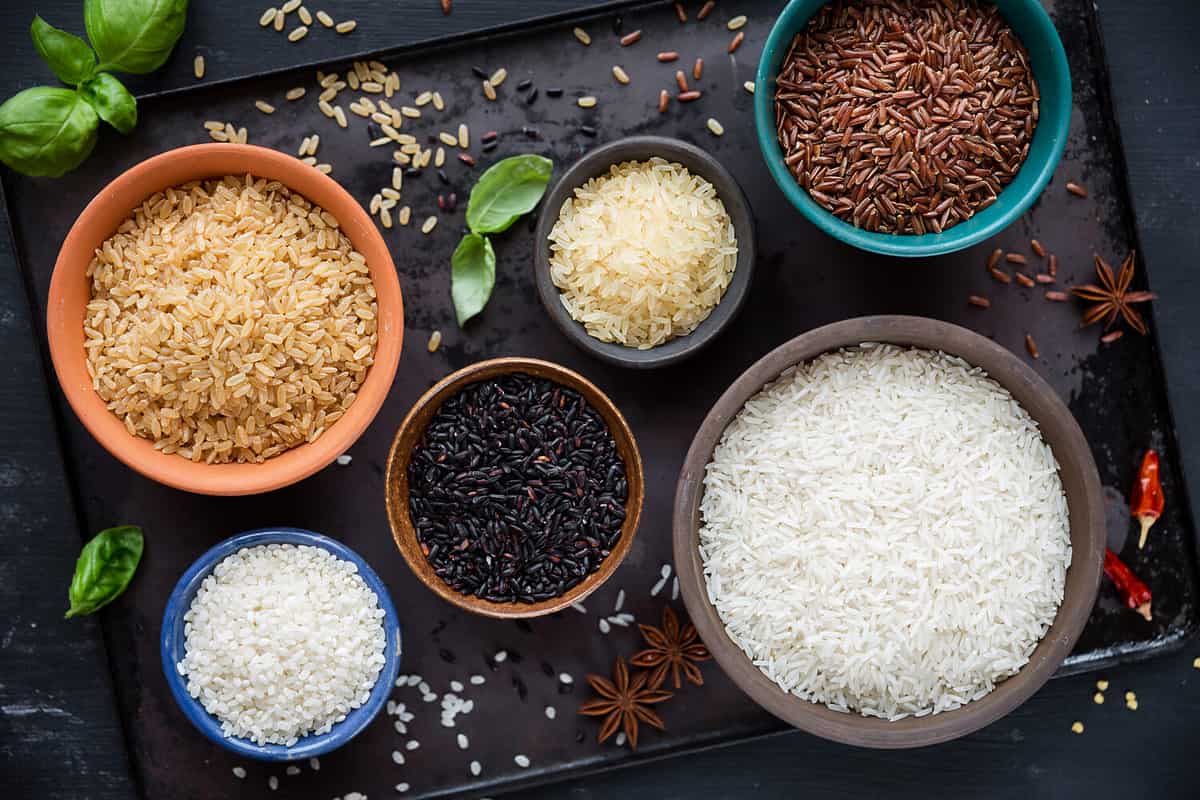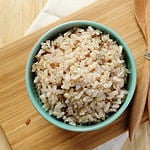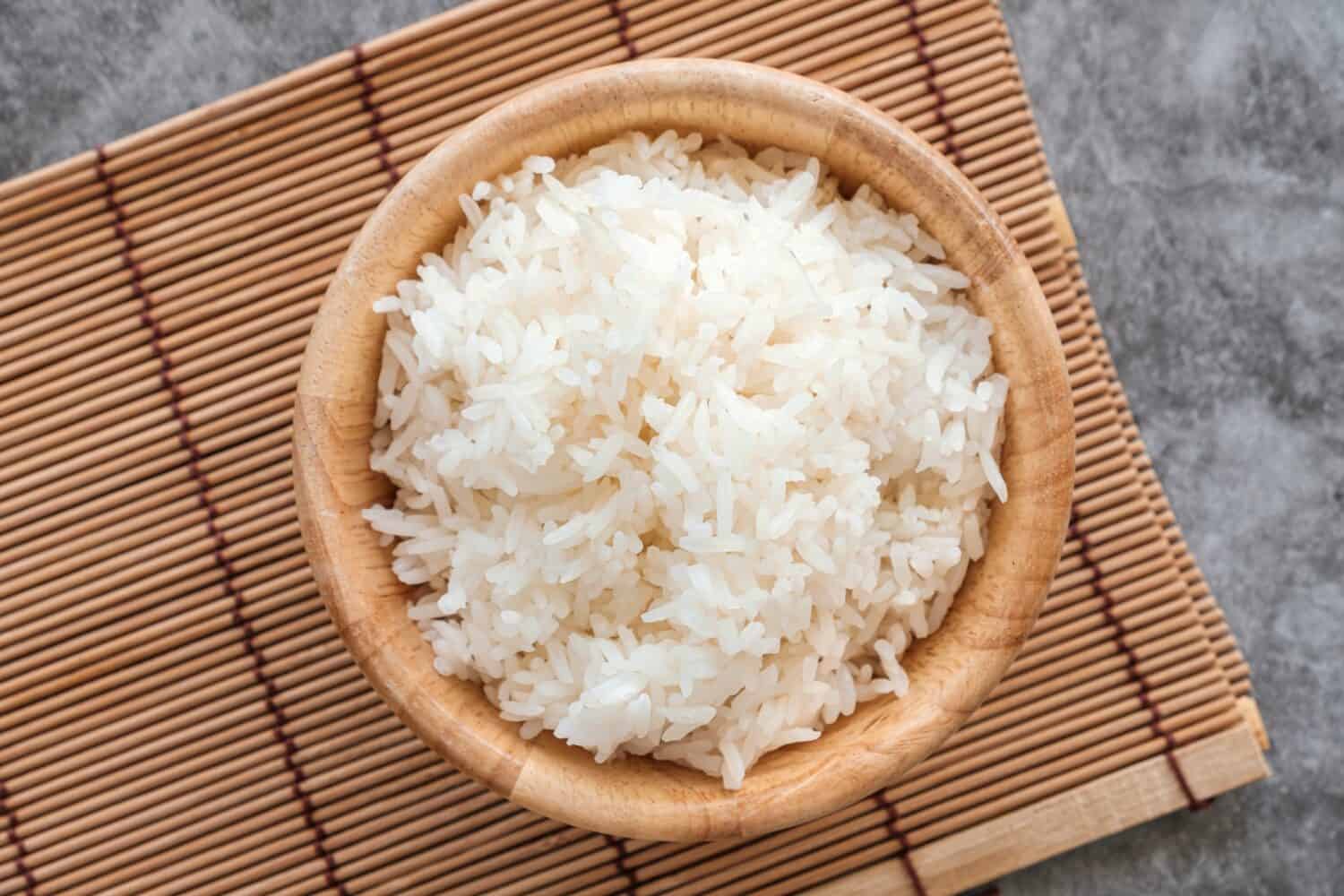You often wonder what you can make for a quick and easy dinner, especially when you have had a long, busy day at work. As a parent, kids often ask you, “What’s for dinner?” and “What time are we eating?” Thankfully, nowadays we can speed things up with the convenience of a microwave. Many foods can be cooked in the microwave, and rice is a staple food for more than half of the globe's population. Some people find making rice difficult; however, learning how to cook microwave rice is effortless and saves you time. If you have never made microwave rice before, don’t worry; it’s super easy, and today you can learn how to microwave rice in just a few simple steps.
What Are the Best Types of Rice to Cook in the Microwave?
According to USARice, there are over 120,000 types of rice. You may be wondering which ones are best to cook in the microwave. Well, we’ve got you covered. Additionally, you can cook any type of rice in the microwave; however, the cooking time may vary depending on the type of rice used.

©saurabhpbhoyar/Shutterstock.com
The most common types of rice are:
- White rice: This is fluffy, light, and versatile and is best used for stuffing peppers, casseroles, making fish cakes, and stir-fries. For best results, use 2 cups of water for 1 cup of rice.
- Brown rice: Fluffy, chewy, and nutty, and 100% whole grain. Brown rice is ideal for soups, salads, casseroles, and stir-fries. For best results, use 2 ½ cups of water for 1 cup of rice.
- Jasmine rice: Originating from Thailand, this long-grain rice has a soft texture and sweet flavor. It is best served in a stir-fry, rice salad, pilaf, or fried rice dish. For best results, use 1 ½ cups of water for 1 cup of rice.
- Arborio rice: Native to Italy, this rice is used for risotto and is also tasty in rice cakes and soups. Additionally, risotto contains essential starches, creating a creamy texture when cooked; thus, it is advised not to rinse the rice beforehand. Use 2 cups of water for 1 cup of rice.
- Basmati rice: Has a wonderful smell and a delectable flavor. It pairs well with rice salads, stews, and soups and is perfect for layered dishes like pilau and biryani. Use 2 cups of water for 1 cup of rice.
- Black rice: Also known as forbidden rice, and turns purple once cooked. It has a texture that can be compared to brown rice, allowing it to be a good substitute. It goes well as a side dish with chicken, salads, vegetables, and tofu. For best results, soak black rice for 30 minutes before cooking. Use 2 ½ cups of water for 1 cup of rice.
- Wild rice: This is chewy and crunchy and best used in soups, stuffings, and casseroles. Use 1 ½ cups of water for 1 cup of rice for a chewy ‘al dente’ texture.
Nutritional Value of Different Types of Rice
Below are the nutritional values for different types of rice, according to Nutritionix.
| Nutrition | White rice: Serving Size: 1 cup (158g) | Brown rice: Serving Size: 1 cup (196g) | Jasmine rice: Serving Size: 1 cup (158g) | Arborio rice: Serving Size: 1 cup (186g) | Basmati rice: Serving Size: 1 cup (158g) | Black rice: Serving Size: 1 cup (158g) | Wild rice: Serving Size: 1 cup (164g) |
|---|---|---|---|---|---|---|---|
| Calories | 205 | 218 | 205 | 242 | 205 | 205 | 166 |
| Total Fat | 0.4 g | 1.6 g | 0.4 g | 0.4 g | 0.4 g | 0.4 g | 0.6 g |
| Saturated Fat | 0.1 g | 0.3 g | 0.1 g | 0.1 g | 0.1 g | 0.1 g | 0.1 g |
| Polyunsaturated Fat | 0.1 g | 0.6 g | 0.1 g | 0.1 g | 0.1 g | 0.1 g | 0.4 g |
| Monounsaturated Fat | 0.1 g | 0.6 g | 0.1 g | 0.1 g | 0.1 g | 0.1 g | 0.1 g |
| Cholesterol | 0 mg | 0 mg | 0 mg | 0 mg | 0 mg | 0 mg | 0 mg |
| Sodium | 1.6 mg | 2 mg | 1.6 mg | 0 mg | 1.6 mg | 1.6 mg | 4.9 mg |
| Total Carbohydrates | 45 g | 46 g | 45 g | 53 g | 45 g | 45 g | 35 g |
| Dietary Fiber | 0.6 g | 3.6 g | 0.6 g | 0.6 g | 0.6 g | 3 g | |
| Sugars | 0.1 g | 0.1 g | 0.1 g | 0.1 g | 1.2 g | ||
| Protein | 4.3 g | 4.6 g | 4.3 g | 4.4 g | 4.3 g | 4.3 g | 6.5 g |
| Vitamin D | 0 mcg | 0 mcg | 0 mcg | 0 mcg | 0 mcg | 0 mcg | 0 mcg |
| Calcium | 16 mg | 19.6 mg | 16 mg | 1.9 mg | 16 mg | 16 mg | 4.9 mg |
| Iron | 1.9 mg | 1 mg | 1.9 mg | 2.7 mg | 1.9 mg | 1.9 mg | 1 mg |
| Potassium | 55.3 mg | 154.1 mg | 55.3 mg | 48.4 mg | 55.3 g | 55.3 mg | 165.6 mg |
| Caffeine | 0 mg | 0 mg | 0 mg | 0 mg | 0 mg |
Break down which rice has the most per cup
- Arborio rice: most calories per cup: 242 g; total carbohydrates per cup: 53 g; iron per cup: 2.7 mg.
- Brown rice: most total fat per cup: 1.6 g; calcium per cup: 19.6 g; dietary fiber per cup: 3.6 g
- Wild rice: most sodium per cup: 4.9 g; sugars per cup: 1.2 g; protein per cup: 6.5 g; potassium per cup: 165.6 g.
Moreover, MedineNet has found several studies where consuming whole grains like brown rice and wild rice can benefit the body with weight loss and help control blood sugar levels, which can reduce the risk of diabetes.

©kuvona/Shutterstock.com
How Do You Reheat Rice in the Microwave?
Reheating rice is quick and easy. First, drizzle 1-2 tablespoons of water over the rice to prevent drying. Next, cover the container with a lid or cling wrap and put it in the microwave for 3-4 minutes to re-steam.
How Do You Microwave Rice Without It Boiling Over?
Preventing the rice from boiling over is relatively simple. Place your desired amount in a larger dish. Use the same water-to-rice ratio per cup of rice. Make sure to use a microwave-safe dish that is deep enough to allow enough space for the rice to rise. Keep in mind that one cup of rice expands and is enough to feed 2-3 adults. The general rule of thumb is to use a 1 ½ quart-sized dish to make 1 cup of rice. What's more, leftover rice can be stored. Store in the fridge for two days or frozen for up to three months in an airtight container.
Furthermore, leftover rice is perfect for making fried rice or rice pudding. There is no need to waste when it comes to food; leftovers are versatile, and with a bit of guidance, anyone can create an amazing dish with leftover rice.
How to Microwave Rice: A Step-by-Step Guide
Equipment
To make rice perfectly in the microwave, all you need is a microwave-safe glass bowl with a lid. If you don’t have a lid, cover it with cling wrap.
Ingredients
- Rice
- Water
- Salt
Step by Step
- First, measure out your desired amount of rice, give it a rinse, and then put the rice, salt, and water into the microwave-safe glass bowl.
- Then, cover it with a lid or cling wrap and put it in the microwave on medium heat for 8 to 10 minutes, depending on the power of the microwave.
- Remove it from the microwave, give it a stir with a fork, and serve hot.

How to Microwave Rice
- Total Time: 11 minutes
- Yield: 4 1x
Description
Follow this step-by-step guide to make perfect microwave rice.
Ingredients
- 1 cup Basmati rice (180 g)
- 1 teaspoon salt
- 2 cups of water (480 ml)
Instructions
- First, rinse the rice until the water runs clear. Place the rice, salt, and cold water in a microwave-safe bowl.
- Next, cover the bowl with a lid or cling wrap, and put it in the microwave on medium heat for 8–10 minutes.
- Remove it from the microwave. If it is still wet, cook for another 1-2 minutes. Take off the lid or cling wrap, stir with a fork, and serve hot.
Notes
NOTE: Cup sizes may vary; be sure to use the same cup when measuring water. Depending on the microwave wattage, if the rice is still wet, put it back in the microwave for a further 1-2 minutes. To give your rice extra flavor you can also add stock to the water before placing it in the microwave.
- Prep Time: 1 minute
- Cook Time: 10 minutes
- Category: Main Course
- Method: Microwave
Nutrition
- Serving Size: 1 cup
- Calories: 169
- Sugar: 0.1 g
- Sodium: 587 g
- Fat: 0.3 g
- Saturated Fat: 0.1 g
- Carbohydrates: 37 g
- Fiber: 0.6 g
- Protein: 3.3 g
The image featured at the top of this post is ©poomsak suwannasilp/Shutterstock.com.

